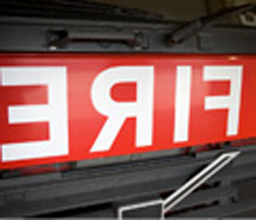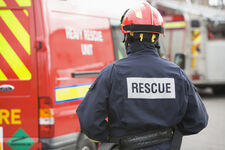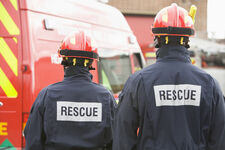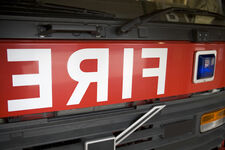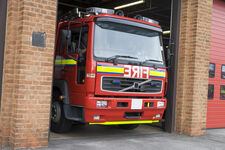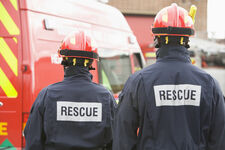Regulation
There is a growing view that building regulations have not kept pace with innovation in construction.
Growing numbers of professionals within the design, building and fire safety community believe the way that timber frame construction regulations have developed is flawed.
This has led to a call for an urgent review of the Building Regulations.
Crucial building tests
A fire test on a six-storey timber frame building at the BRE’s Cardington research building in 1999, helped paved the way for greater use of timber frame methods.
But the test report failed to mention a secondary fire that broke out in the building several hours after the fire brigade had extinguished the fire and monitored for hotspots. This ignited in a cavity in the third floor and spread through cavities on floors 3,4,5 and 6.
Regulations and guidance that followed refer back to this test and rely heavily on quality workmanship and correct installing of fire stopping measures to retain integrity of the structure.
Relevant guidance and regulations
The building regulations changed in 1991 to allow timber frame buildings to potentially reach 8-storeys
Guidance on how to comply on fire safety is given in Approved Document B of the Building Regulations
The Health and Safety Executive produced document HSG168 on dealing with fire safety on construction sites
Management of fire risks in residential buildings: Regulatory reform (Fire Safey) Order 2005; Housing Acts 1985, and 2004
Control concerns
Evidence from timber frame fires shows that “laboratory” building conditions at BRE are often not being replicated on construction sites.
Building control officers visit sites too late in the process to check quality.
Once a building is finished, surveys for cavity wall and ceiling fire stopping measures are impractical because they require destructive testing.
Sufficiently trained people are not carrying out regular fire risk assessments within existing buildings.
The consequences of DIY activity and building alterations work are not fully recognised by building owners.
Urgent review needed
The Greater London Assembly investigation into timber frame buildings in 2010 called for the Building Regulations governing timber frame to be urgently reviewed. The review needs to focus on the relationship between current guidance and how it is being put into practice on site.
The Fire Protection Association and Chief Fire Officers Association have each raised serious concerns about how existing regulations are being followed in practice.
Some actions called for:
• London Assembly called for sprinklers to be fitted to timber frame structures under construction.
• Active 24-hour surveillance at sites under construction to stop arson
• Strict rules to prevent partial occupation of developments until the whole scheme is complete and signed off.
• Set up register of timber frame homes for the fire services to help them identify the risks on a call-out.
• Requirement to report of all timber frame construction starts to the local fire service.
• Industry groups have called for a complete ban on the use of timber frame building on three-storey buildings and higher as well as nursing homes where fast escape is a problem.
There is a growing view that building regulations have not kept pace with innovation in construction.
Growing numbers of professionals within the design, building and fire safety community believe the way that timber frame construction regulations have developed is flawed.
This has led to a call for an urgent review of the Building Regulations.
Crucial building tests
A fire test on a six-storey timber frame building at the BRE’s Cardington research building in 1999, helped paved the way for greater use of timber frame methods.
But the test report failed to mention a secondary fire that broke out in the building several hours after the fire brigade had extinguished the fire and monitored for hotspots. This ignited in a cavity in the third floor and spread through cavities on floors 3,4,5 and 6.
Regulations and guidance that followed refer back to this test and rely heavily on quality workmanship and correct installing of fire stopping measures to retain integrity of the structure.
Relevant guidance and regulations
The building regulations changed in 1991 to allow timber frame buildings to potentially reach 8-storeys
Guidance on how to comply on fire safety is given in Approved Document B of the Building Regulations
The Health and Safety Executive produced document HSG168 on dealing with fire safety on construction sites
Management of fire risks in residential buildings: Regulatory reform (Fire Safey) Order 2005; Housing Acts 1985, and 2004
Control concerns
Evidence from timber frame fires shows that “laboratory” building conditions at BRE are often not being replicated on construction sites.
Building control officers visit sites too late in the process to check quality.
Once a building is finished, surveys for cavity wall and ceiling fire stopping measures are impractical because they require destructive testing.
Sufficiently trained people are not carrying out regular fire risk assessments within existing buildings.
The consequences of DIY activity and building alterations work are not fully recognised by building owners.
Urgent review needed
The Greater London Assembly investigation into timber frame buildings in 2010 called for the Building Regulations governing timber frame to be urgently reviewed. The review needs to focus on the relationship between current guidance and how it is being put into practice on site.
The Fire Protection Association and Chief Fire Officers Association have each raised serious concerns about how existing regulations are being followed in practice.
Some actions called for:
• London Assembly called for sprinklers to be fitted to timber frame structures under construction.
• Active 24-hour surveillance at sites under construction to stop arson
• Strict rules to prevent partial occupation of developments until the whole scheme is complete and signed off.
• Set up register of timber frame homes for the fire services to help them identify the risks on a call-out.
• Requirement to report of all timber frame construction starts to the local fire service.
• Industry groups have called for a complete ban on the use of timber frame building on three-storey buildings and higher as well as nursing homes where fast escape is a problem.
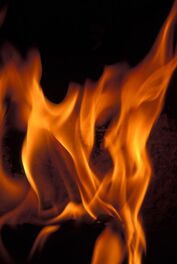
| Chief Fire Officers Association -Timber Framed Construction (September 2010) www.cfoa.org.uk |
|
Fire Safety In London |

